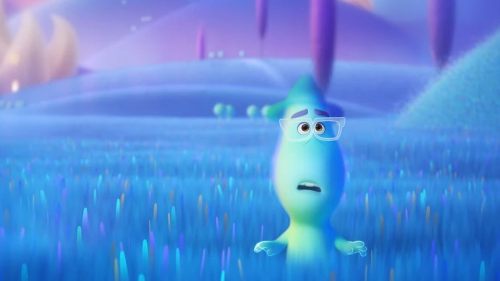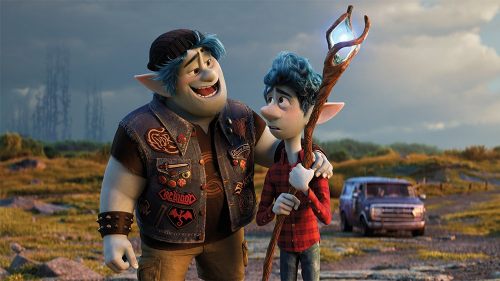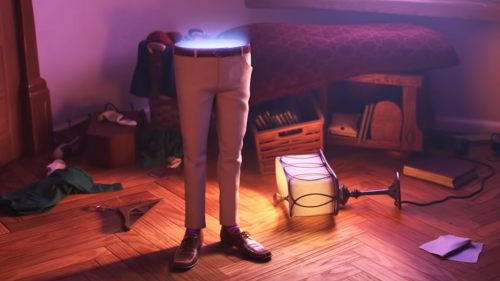Sunday Reads: Clothes Make The Hero In THE INCREDIBLES 2
The Incredibles 2 is almost here! Get your tickets now!
There was never a naked model of Mickey Mouse. The earliest concept of Mickey was a mouse wearing shorts; gloves came soon after, and that’s Mickey. Mouse, shorts, gloves. The clothes are the character, from an artistic and therefore fundamental perspective.
Point being, we don’t think much about clothes in animated films. While modern 3D animation is detailed to a mind-boggling degree, down to individual hairs and realistic fabric modeling, our general perception of animation remains rooted in traditional 2D techniques.
Those 2D techniques were the order of the day, as far as clothes went, well into the digital 3D era. On The Incredibles, for example, there’s no difference between the characters and their costumes. Elastigirl’s suit is part of her; the fabric doesn’t stretch differently than she does. Frozone looking for his super-suit was ironic, because while he wore the suit, Frozone and those clothes were effectively one.
Things have long since changed at Pixar. The cloth in Brave was standard-setting, and the art of simulating and assembling cloth has steadily progressed at the studio. Artists in the simulation department effectively became tailors, who trained with real-world cloth, sewing and fabrication to better model clothes in a digital space.
It’s been a long road to the evolution of a proper costume department in digital animation, which brings us to The Incredibles 2. Three women led the work on the sequel: shading art director and costume designer Bryn Imagire, character artist Deanna Marsigliese, and tailoring lead Fran Kalal, who did Merida’s dresses on Brave. Imagire is a veteran of The Incredibles, having performed the same duties on that movie that she did on the sequel.
Imagire summarizes the advancements in tech since The Incredibles: “On the first movie we didn’t have Fran (Kalal) and her amazing team to construct garments. These original suits were really just shaded onto the bodies of the characters. Go back and look at the first one and you’ll see the logo stretches and the surface doesn’t really look much like fabric.”
Things are very different now. “On this film Fran and her team constructed these garments out of patterns,” Imagire says, “and they act much more like fabric. You get folding and creasing, there’s a texture on it. You’ll see it doesn’t stretch around as much because it’s a separate piece of material.”
“A lot of time and effort was put into upgrading the super suits for the family,” Kalal says. “We spent a lot of time looking at how to keep the logos from stretching and deforming too much. We also learned to think about the fabric as a compression material that would only fold in certain areas, like the elbows, behind the knees, small of the back and between the shoulder blades.”
Marsigliese, whose personal style reflects the mid-century modern look of the film, making her an ideal choice to dress the characters, brought the film’s style to life with a keen eye for detail. “A huge amount of effort is focused on movement,” she explains, “how the character's actions affect the garment, and how the garment restricts the character’s actions are important to consider.”
Once Imagire and Marsigliese design clothes, Kalal and her team create digital materials that can be animated. “We cut a 3D outfit into panels and lay them flat out on a pattern just as if you were sewing in the real world. Our simulator observes grain direction, so the orientation of these pieces absolutely matters.”
No detail is too small. The team considers “‘placement of pleating, darting, we talk about button sizes, zipper lengths, all of it,” Marsigliese says, “and we have to consider accessories. Glasses, bags, jewelry, all of that informs characters.” As an example, Imagire explains that we’ll see Jack-Jack in cloth diapers when Bob is taking care of him; when Helen is around the baby wears a full set of clothes, to indicate the differences in their approach to parenting.
As little consideration as most people give to wardrobe in animation, I’d double any bet to guess there’s exponentially less attention paid to background actors.
We don’t tend to notice background actors until they’re bad, and that’s as it should be. The best background work helps build the world; it contributes to a sense of space that is organic and natural.
That’s in live action – animation can skip background characters entirely. Watch the Incredibles scene where the family returns to the city after defeating Syndrome. Cars are on the streets, but in most shots there are no people at all. Even the shot where the RV tumbles into a parking spot has no people to react to the action.
Fourteen years later, Pixar is able to populate crowds, and the wardrobe work for the background actors in The Incredibles 2 was what truly blew me away when I visited Pixar a couple months ago. There are over a hundred background characters in this film, who, as Marsigliese describes, are “men, women and children, all different body shapes and sizes – and we have to dress them all.”
To make the people who fill out the film look like they belong in the world, Marsigliese looked at day to day mid-century wardrobes, and at consumer clothing patterns. Edna Mode’s designs wouldn’t do for someone working at a bank. In conjunction with Fran Kalal, she created an efficient method to dress hundreds of people with far fewer garments, each of which has to be designed, digitally tailored and shaded, and fit to the background character. In short, they made a whole line of mix and match objects which can be shaded differently, and stretched and reshaped to fit different body styles.
Working together, the teams were able to use 12 garments to dress 72 unique male background characters, and 20 garments to create 64 unique female background characters. The effect is a more realistically populated world that can convey danger and drama in ways the original film couldn’t even approach. The difference is subtle but significant.
The Incredibles 2 opens on June 8.



